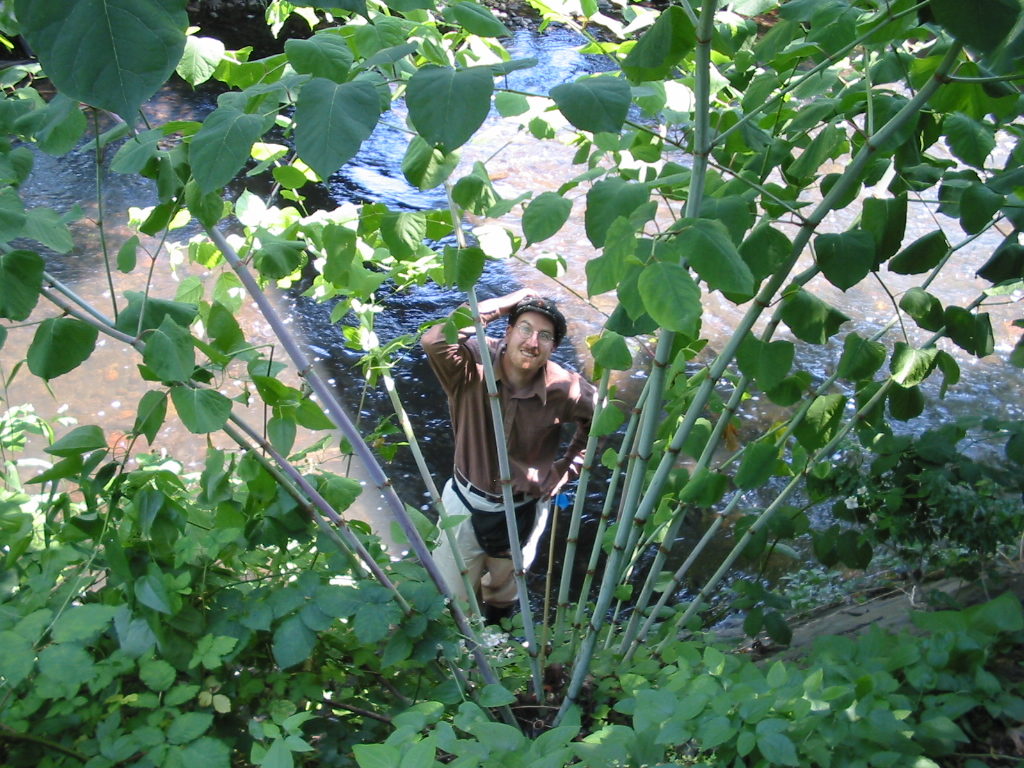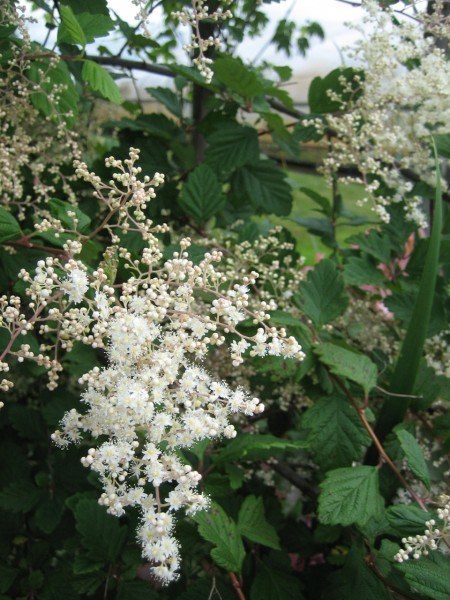Invasive: Knotweeds–Japanese, giant, Bohemian (Reynoutria spp., aka Fallopia, Polygonum)
Characteristics: Knotweeds are tall, perennial members of the buckwheat family. Rocketing out of the ground in late March, they can reach anywhere from 10 (Japanese) to 16 (giant) feet tall; a hybrid of these (Bohemian) is most common in the Pacific northwest, and is intermediate between these two in height. All three have distinctive, bamboo-like green stems splotched with red; heart-shaped leaves 6″ (Japanese) to more than 15″ (giant) long; and spikes of creamy-white flowers coming out in late summer/early fall (i.e., now).
Spread: Knotweed makes more of itself any way it cares to, though it is best-known for its hyper-aggressive vegetative reproduction. Once established, the plant’s rhizomes dive (to 10′) and spread (to more than 20′), putting up new shoots along the way and breaking through pretty much anything in their path: foundations, pavement, bank vaults, doesn’t matter. (That last one is maybe an exaggeration. Maybe.) As if that weren’t enough, fragments of stem or rhizome as small as 1/2″ can put out new roots if left in contact with soil, making knotweed an absolute terror in streamside areas, where flood events carry pieces downstream to infest new places. Once established, its ambitious spread crowds out native plants and forms very persistent monocultures.
Control: Control of large, established patches of knotweed usually requires the use of herbicide; manual removal is extremely difficult, due to the plant’s extensive underground rhizome network. Repeated cutting may eventually starve the rhizomes, particularly on younger infestations. It is important to note that any removed knotweed material needs to be either bagged and put in the trash, or laid out to completely dry in the sun, in order to avoid risk of making it someone else’s problem.
Native Replacements: Oceanspray (Holodiscus discolor) is a fabulous native shrub with clusters of creamy-white flowers that will do well in most habitats where knotweeds are found–it won’t pop through your driveway, but you’re probably not looking to replace knotweed there.


